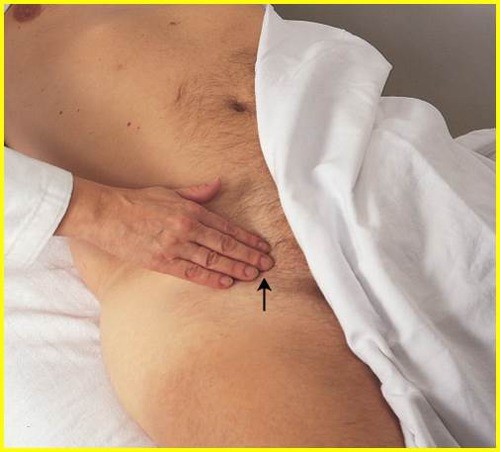A nurse is caring for an infant who has coarctation of the aorta.
Which of the following should the nurse identify as an expected finding?
Frequent nosebleeds
Upper extremity hypotension
Weak femoral pulses.
Increased intracranial pressure
The Correct Answer is C

This is because coarctation of the aorta is a congenital condition where the aorta is narrow, usually in the area where the ductus arteriosus inserts. This causes a decrease in blood flow to the lower body, resulting in weak or absent pulses in the femoral arteries.
The other choices are incorrect for the following reasons:
- Choice A, frequent nosebleeds, is not a typical sign of coarctation of the aorta.
Nosebleeds can be caused by many factors, such as dry air, allergies, trauma, or bleeding disorders.
- Choice B, upper extremity hypotension, is also not a common finding in coarctation of the aorta. In fact, patients with this condition may have high blood pressure in the upper extremities due to the increased resistance of the narrowed aorta.
- Choice D, increased intracranial pressure, is not directly related to coarctation of the aorta.
Increased intracranial pressure can be caused by various conditions that affect the brain, such as head injury, stroke, infection, or tumor.
Normal ranges for blood pressure and pulse vary depending on age, sex, and health status.
However, some general guidelines are:
- Blood pressure: less than 120/80 mmHg for adults; less than 95/65 mmHg for infants.
- Pulse: 60 to 100 beats per minute for adults; 100 to 160 beats per minute for infants.
Nursing Test Bank
Naxlex Comprehensive Predictor Exams
Related Questions
Correct Answer is D
Explanation
the correct answer isd. Your desire to be an organ donor must be documented in writing.This is because organ donation is a legal and medical process that requires your consent and documentation1. Some of the other options are incorrect or misleading. Here are some explanations:
- a.Your namecanbe removed once you are listed on the organ donor list2.You can change your mind at any time and revoke your consent to donate
- b.Youdo nothave to be at least 21 years of age to become an organ donor2.Many states allow people younger than 18 to register as organ donors, but they need parental or guardian consent if they die before their 18th birthday
- c.Youcanhave a witness for your consent to donate, but it is not required1.Some states may require a witness signature on your donor card or registration form, but others do not
Correct Answer is A
Explanation
Answer and explanation.
The correct answer is choice A. A nontender, protruding abdomen is a normal finding for a 2year-old toddler. This is due to the immature development of the abdominal muscles and the relatively large size of the liver and kidneys in relation to the rest of the body.
Choice B is wrong because the head circumference should be equal to or less than the chest circumference by age 2. A head circumference that exceeds the chest circumference could indicate hydrocephalus or other neurological problems.
Choice C is wrong because the fontanels, or soft spots on the skull, should be closed by age 18 months. Palpable fontanels could indicate dehydration, malnutrition, or congenital disorders.
Choice D is wrong because the natural loss of deciduous teeth, or baby teeth, usually begins around age 6. Premature loss of teeth could indicate dental caries, trauma, or endocrine disorders.
Whether you are a student looking to ace your exams or a practicing nurse seeking to enhance your expertise , our nursing education contents will empower you with the confidence and competence to make a difference in the lives of patients and become a respected leader in the healthcare field.
Visit Naxlex, invest in your future and unlock endless possibilities with our unparalleled nursing education contents today
Report Wrong Answer on the Current Question
Do you disagree with the answer? If yes, what is your expected answer? Explain.
Kindly be descriptive with the issue you are facing.
